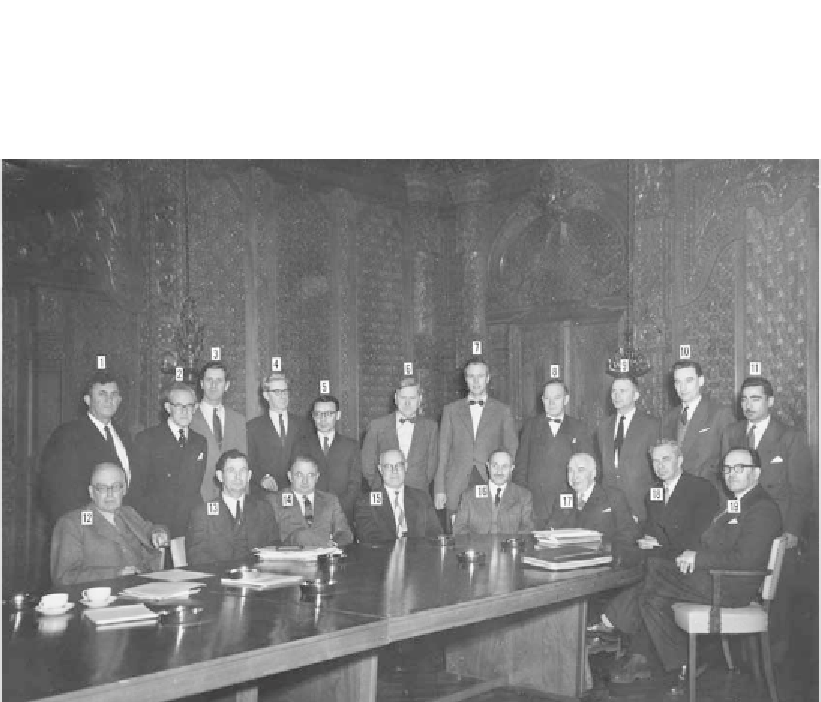Geoscience Reference
In-Depth Information
Figure 9.1
The First Meeting of SCAR, The Hague, February 1958: 1. Dr L. M. Gould,
United States; 2. Dr Ronald Fraser, ICSU; 3. Dr N. Herlofson, Convenor; 4. Col. E. Herbays,
ICSU; 5. Professor T. Rikitake, Japan; 6. Professor Leiv Harang, Norway; 7. D. Valter Schytt,
IGU; 8. Dr Anton F. Bruun, IUBS; 9. Mr J. J. Taljaard, South Africa; 10. Capt. F. Bastin, Belgium;
11. Capt. Luis de la Canal, Argentina; 12. Sir James Wordie, UK; 13. Professor K. E. Bullen,
Australia; 14. Dr H. Wexler, United States; 15. Ing. Gén. Georges Laclavère, IUGG; 16.
Ing. Gén. André Gougenheim, France; 17. Mr Luis Renard, Chile; 18. Dr M. M. Somov,
USSR; 19. Professor J. van Mieghen, Belgium.
its surrounding Southern Ocean in the Earth System. To make this pan-Antarctic
approach work, SCAR relies on free and unrestricted access to Antarctic scienti
c
data and information from all Antarctic nations, a feature that is supposed to be
guaranteed by the Antarctic Treaty, but which works less well in practice than
was originally hoped for.
SCAR
s national delegates meet every two years to set priorities and discuss
progress. Actual day-to-day organisation is the responsibility of a small SCAR
Secretariat, based at the Scott Polar Research Institute in Cambridge, UK.
Back in 1958 (
Table 9.1
), SCAR had just 12 member countries, and four ICSU
scienti
'
c unions (IGU, covering geography and glaciology, IUBS for biology, IUGG
for geodesy and geophysics and URSI for radio science
-
meaning all aspects of



Search WWH ::

Custom Search